Seaweeds of the South African South Coast


What are seaweeds?
Seaweeds are large algae that live in the sea. By ‘large’ is meant visible to the naked eye (macroscopic) as opposed to microscopic algae, which occur in the phytoplankton and attached to anything solid. Seaweeds generally require something solid to attach to, and so are dominant on many rocky seashores. In very sheltered sections of estuaries, there are occasional loose growths of seaweeds (e.g. green algae such as Chaetomorpha), but almost all seaweeds grow attached. The largest of South African seaweeds, the west coast kelp Ecklonia maxima, can grow to 17m in length, but many species are 5-20cm in maximum length, and much of the seaweed species diversity is composed of very small red seaweeds growing on other seaweeds (epiphytes). The largest seaweeds on the south coast are the small kelp Ecklonia radiata and fucoid brown algae such as species of Sargassum, Anthophycus and Oerstedtia, which may grow up to 1-2m long.
Seaweeds are plants in the broad sense (Bolton 2016) - organisms that fix carbon from dissolved forms in the water into carbohydrates, via the process of photosynthesis. Being photosynthetic, seaweeds need light to grow, and as water absorbs light they are limited by water depth. Most species grow in shallow water <10m), and very few seaweeds grow below 30 to 50m (depending on water clarity). There are three major groups of seaweeds, which have very different evolutionary origins . They are usually known by their common names: red, green and brown seaweeds. The green seaweeds are placed taxonomically in the phylum Chlorophyta, and the red algae in the phylum Rhodophyta, whereas the brown algae make up the class Phaeophyceae of the phylum Ochrophyta. The common names of these groups are not always accurate because some red algae in shallow water are brownish or greenish rather than red. Around two-thirds of South African seaweed species are red algae, with the remaining third fairly equally split between green and brown species.
The ‘blue-green algae’ are not included here. They are also known as Cyanobacteria, and are common high up on seashores, often forming blackish crusts on the rock surface (some seaweeds in other groups also form thin crusts over the surface of the rock). Brown and green crusts are treated here, but there are common red crusts which contain calcium carbonate in the cell walls (crustose coralline red algae) which require special methods to study them (Maneveldt et al. 2008). These are not included in this website.
Some seaweeds can be identified from a photograph of the whole plant, but accurate species-level identification of many groups requires microscopic examination. For this reason we have included microscope pictures of the detailed structure of most species. Some smaller species require the presence of reproductive structures for identification (especially small red epiphytes such as Ceramium, Callithamnion etc.). Some other larger seaweeds have visible external reproductive structures, whereas others have their reproductive structures embedded in the plant, and these can only be seen in a microscopic section. Photographs of these cross-sections, where necessary for identification, have been included wherever possible.
References
Bolton JJ (2016). What is aquatic botany? - and why algae are plants: the importance of non-taxonomic terms for groups of organisms. Aquatic Botany. 132: 1-4.
Maneveldt GW, Chamberlain YM, Keats DW (2008). A catalogue with keys to the non-geniculate red algae (Corallinales, Rhodophyta) of South Africa. South African Journal of Botany 74: 555-566.
Citing this publication:
Anderson RJ, Stegenga H, Bolton JJ. 2016. Seaweeds of the South African South Coast.
World Wide Web electronic publication, University of Cape Town, http://southafrseaweeds.uct.ac.za; Accessed on 05 January 2026
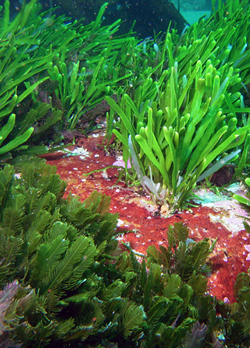 Green seaweeds (Phylum Chlorophyta)
Green seaweeds (Phylum Chlorophyta)
Guide to the south coast genera
The green seaweeds range in size from almost microscopic threads on the surface of other seaweeds, to large plants which may be more than 1m in length (e.g. Codium platylobium). Some species, particularly in the genera Ulva and Chaetomorpha, grow especially in habitats with high nitrogen content such as estuaries affected by humans and upper shore rock pools affected by bird guano. Some groups of green algae have an unusual construction with no separate cells, and are made up of tubes consisting of an outer cell wall containing millions of nuclei and chloroplasts (the siphonous greens such as Codium, Caulerpa, Halimeda etc.). Others are branched or unbranched single rows of cells (e.g. Chaetomorpha, Cladophora) or flat sheets of cells (e.g. Ulva).
(Two species of the siphonous green genus Caulerpa)
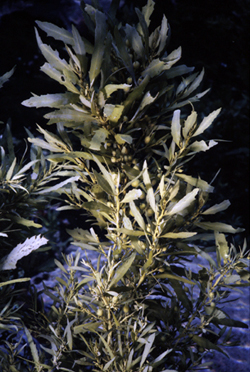 Brown seaweeds (Phylum Ochrophyta, Class Phaeophyceae)
Brown seaweeds (Phylum Ochrophyta, Class Phaeophyceae)
The brown algae include the largest and most complex of the seaweeds. The small kelp Ecklonia radiata forms a kelp bed margin on rocky shores not subjected to maximum wave action along the south coast. The most complex form among the algae is in the genus Sargassum and its relatives, with separate holdfast, branched stems (stipes), floats, leaflike fronds, and visible, separate reproductive stuctures. The simplest brown algae are thread-like forms growing as small epiphytes on other seaweeds (e.g. Ectocarpus, Feldmannia, Hinksia etc.). The order Dictyotales is particularly species-rich in warmer waters, becoming more prominent to the east of the region. The species in this group can be particularly difficult to identify (genera such as Dictyota, Zonaria, Dictyopteris).
(Sargassum, a highly-developed brown seaweed with “stems” and leaf-like fronds).
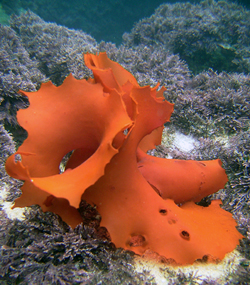 Red seaweeds(Phylum Rhodophyta)
Red seaweeds(Phylum Rhodophyta)
The most abundant forms in the red algae are small threadlike epiphytes and flat membranous blades. Both of these groups can be very tricky to identify without detailed examination. There is a wealth of diversity among small red epiphytes, with many genera and species. The study of some of these is not yet complete, and a small number of species on this website have not yet been formally described. Red blades can also be very tricky, because accurate species identification often relies on experience and/or detailed comparison of cell structure. Many red algae grow as ‘turfs’: tightly-packed growths of many individuals surrounded by sand and covering the surface of the rock. For identification, these turfs need to be separated under a microscope, and individuals carefully examined.
(Pachymenia, a red blade, on a bed of articulated coralline seaweeds).
eBook: Seaweeds of the South Coast of South Africa (Download free)
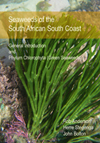 |
Rob Anderson, Herre Stegenga, John Bolton Seaweeds of the South Coast of South Africa, Book 1: General Introduction and Phylum Chlorophyta (Green Seaweeds). |
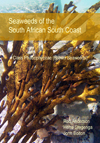 | Rob Anderson, Herre Stegenga, John Bolton Seaweeds of the South Coast of South Africa, Book 2: Class Phaeophyceae (Brown Seaweeds). |
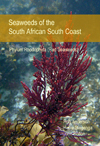 | Rob Anderson, Herre Stegenga, John Bolton Seaweeds of the South Coast of South Africa, Book 3: Phylum Rhodophyta (Red Seaweeds) Order Bangiales to Order Gracilariales Book 4: Phylum Rhodophyta (Red Seaweeds) Order Gigartinales to Order Rhodymeniales Book 5: Phylum Rhodophyta (Red Seaweeds) Order Ceramiales (Part 1) Book 6: Phylum Rhodophyta (Red Seaweeds) Order Ceramiales (Part 1) to Order Hapalidales . |